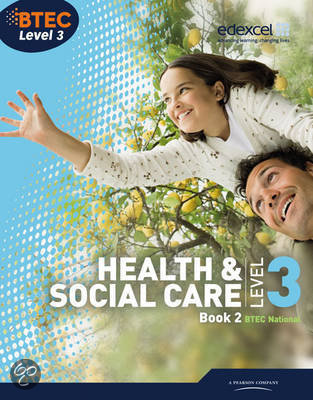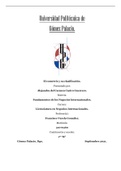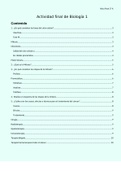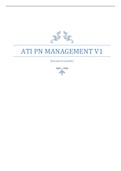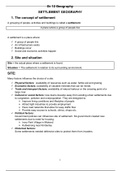,Unit 12: learning outcome B- Examine how to overcome the challenges to daily living faced by
people with additional needs.
In this assignment I will be talking about learning outcome B and C which B is overcoming daily
challenges. Where C is to investigate current practice for respect provision. I will be linking the case
studies to each section.
B1- definitions of disabilities
There are two types of disabilities, the types are the medical model and the social model. The
medical model is looks at the disability instead of looking at the person. Where the social model
looks at the person and helps them live independently. This was created by disabled people to help
people live independently. In the past people would consider disable people as they dependent on
others for help like daily activities. However, now disable people use social construct which is
treating them equally and enabling them to be independent. This is supported by the equality act
which is rights given to everyone that they be treated equally. In the past disability was looked down
on where they were not much help for disable people, they were either stuck at home or made fun
of. However now the world become accessible for disabilities, there is much more help available
than ever before. However, some countries still look down on disability where they have not
developed as like the rest of the world. For example, some countries use the disabled people for
labour with little pay as they are vulnerable, and they do not understand fully. The equality act is
where everyone is treated fairly under the law, this helps to define social construct. Society views on
disability has changed where they are seemed like normal people this could be helped by the
equality act. However there still a lot of improving to do though where many people are still very
judgement and do not consider the equality act.
Disability means you have a physical or mental impairment that has a substantial or long-term
negative effect on daily activities (Definition of disability under the equality act). Disablement means
being unable to do daily activities such as cooking on their own. Discrimination means being unfair
to an individual due to their characteristic for example race. There are types of discrimination, one is
directing which is being mean direct to their face about a certain characteristic. Indirect
discrimination is being discriminated against behind your back. You can have discriminated against a
disability, for example at a school a student may be treated differently because of their disability
(equality and human rights commission 19/02/19). Impairment means someone who lost a function
in a certain part of the body for example, lost of sight.
In case study 1, Rebecca has a disability and additional needs when working with professionals they
could use the medical model which is looking at the disability instead of the person. For example, in
Rebecca case, her professional will look at her accident and treat her. Her professionals could have
used the social model which is looking at the person instead of the disability. For example, they
could look on how to make Rebecca life more independent when she moves out and become an
adult. Rebecca could be discriminated against for her wheelchair or additional needs, for example
she may not get a job because of her disability or may not be able to enter a building because it was
not accessible. If Rebecca were born earlier there would not be much help as there is now for her,
now she has help available such as her additional needs school. However, she is being discriminated
against from her home which is not wheelchair friendly, but this is part of B2. Rebecca has
experienced discrimination from her neighbours making comments about her disability and making
her feel down.
, In case study 2, Ben has a disability of down syndrome. His professionals in his case could look the
medical model where they would rather look at the disability then Ben himself, they would treat
him. The professionals could also look at the social model which looking at Ben instead of his
disability for example looking making him live independently. As Ben is an adult the social model
would have helped him to live independently like come up with a plan on how to cook himself. Ben
can be discriminated from society as people look down on him. People in society normally looked
down on down syndrome specially, Ben could feel discriminated against. Ben was discriminated
against when he went shopping where people were directly rude to him, this would have put his
self-confident down so much. However, if he were born earlier, he could of be treated so much
worse. Ben also experiences discrimination by refusing entry into a fair because of how he looks, this
is very unfair and would lower Bens self esteem and confidence.
B2- minimising environmental and social challenges
People with impairments may face many problems with using anything in the public. There can have
some barriers with public buildings or transport that may be different for them. Public buildings
need to be accessible for the public especially for disable people. For example, putting ramps into
buildings for wheelchair users and they be able to get into the building. Another example is that they
need to put a disable toilet in for people to use. Without these buildings would become not
accessible for disable people and this is a form of discrimination. The planning practice guidance sets
out conditions that buildings need to be accessible for the public regardless of disability (planning
practice guidance 29/11/16). Public transport needs to be accessible for disable people too so them
to use it like everyone else. The department for transport introduced a policy for tackling
accessibility problems. This improves transport for disable people by making transport wider for
wheelchair users. We need transport to be available for disable people to enable them to go to work
and places they wanted and not to discriminated against. There was a report called accessibility
planning policy: evaluation and future directions which had plan strategies on how to improve
transport (government accessibility planning policy 06/08/12). We need to improve transport for
equality as they also need to use the service.
We can minimise barriers in the public by adding ramps, which is now a legal requirement for every
building and part of building regulations 2010. This helps people to access buildings without this it
would be a type of discrimination. Information would need to be in large print or braille for
individuals who have visual impairments. They can request for it to be available beforehand.
For a disable person to work their work would need to adaption the environment. This can include
like putting in ramps where stairs are for wheelchair users to use. Work should ensure people safety
for example having a system in place for a fire where does the wheelchair user go. HASAWA is an
organisation that protects employees from discrimination. When applying to a job they must legally
ask if you have a disability for them to ensure that work is safe. Employment law run by HASAWA
makes sure that the application can came in braille or assistive technology. For interview the
employer can make requirements for example a wheelchair user or the employee make
requirements. This can protect them against the discrimination and be treated like anyone else.
Communication aids can be used to help communicate at work, these are keyboards, specialist
switches or scanning devices. This can help to improve communication for people who had an
accident such as a stroke.
Disable people can enjoy leisure too, this means leisure must be available for these people and
accessible. The equality act ensures that leisure buildings are accessible for disable people. They
need to be accessible by having disable parking, ramps or disable toilets. This means there will be no

